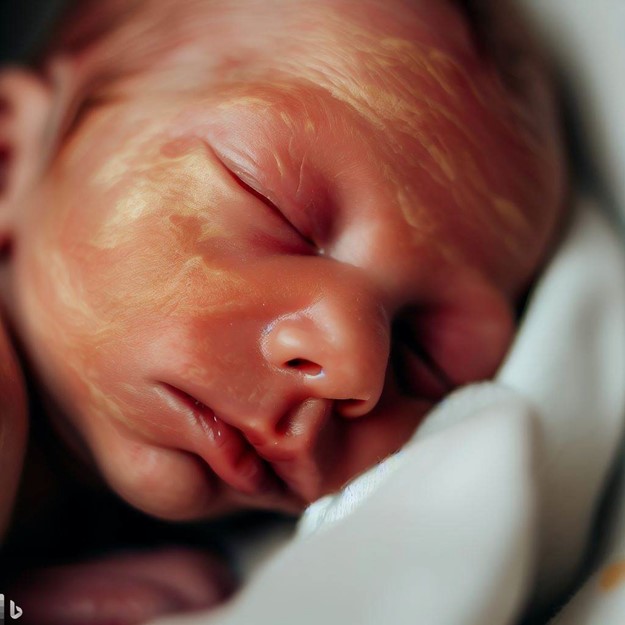When a newborn takes its first breath, what physical changes occur in the heart to increase oxygenation of the body?
The ductus arteriosus expands to allow more blood to enter the lungs
The foramen ovale closes, preventing blood exchange from right to left in the heart
The umbilical vein that carried oxygenated blood in utero becomes the ascending aorta entering the right atrium
The ductus venosus shunts oxygenated aortic blood to the lungs.
The Correct Answer is B
The foramen ovale closes, preventing blood exchange from right to left in the heart. This is because the foramen ovale is a fetal shunt that allows blood to bypass the lungs and flow from the right atrium to the left atrium. After birth, when the baby starts to breathe air, the lungs expand and the pulmonary resistance decreases. This causes an increase in blood flow and pressure in the left atrium, which pushes the foramen ovale closed. This prevents blood from mixing between the right and left sides of the heart and allows oxygenated blood to circulate to the body¹².
Choice A is not correct because the ductus arteriosus does not expand to allow more blood to enter the lungs. The ductus arteriosus is another fetal shunt that
connects the pulmonary artery to the aorta. It allows blood to bypass the lungs and flow from the right ventricle to the aorta. After birth, when the baby starts to breathe air, the oxygen concentration in the blood increases and causes the ductus arteriosus to constrict and close. This increases blood flow to the lungs and decreases blood flow to the aorta.
Choice C is not correct because the umbilical vein that carried oxygenated blood in utero does not become the ascending aorta entering the right atrium. The umbilical vein is a fetal vessel that carries oxygenated blood from the placenta to the fetus. It connects to either the portal vein or the ductus venosus, which then drains into the inferior vena cava. After birth, when the umbilical cord is clamped and cut, the umbilical vein collapses and becomes a fibrous cord called ligamentum teres hepatis.
Choice D is not correct because the ductus venosus does not shunt oxygenated aortic blood to the lungs. The ductus venosus is another fetal vessel that connects the umbilical vein to the inferior vena cava. It allows some of the oxygenated blood from the placenta to bypass the liver and enter directly into the systemic circulation. After birth, when the umbilical cord is clamped and cut, the ductus venosus closes and becomes a fibrous cord called ligamentum venosum.
Nursing Test Bank
Naxlex Comprehensive Predictor Exams
Related Questions
Correct Answer is A
Explanation
The baby sleeps with the mother in bed. This is because sleeping with the baby in the same bed increases the risk of sudden infant death syndrome (SIDS), suffocation, strangulation, and entrapment. The nurse should have assessed the mother’s sleeping arrangements for the baby and provided education on safe sleep practices before discharge. The nurse should advise the mother to place the baby on a firm surface, such as a crib or bassinet, in the same room but not in the same bed as the mother.
Choice B is wrong because having windows covered with screens is not a sign of inadequate home assessment. Screens can help prevent insects and other animals from entering the home and posing a health hazard.
Choice C is wrong because having a refrigerator in the kitchen is not a sign of inadequate home assessment. A refrigerator can help store food and breast milk safely and prevent spoilage and contamination.
Choice D is wrong because having a changing area for the baby is not a sign of inadequate home assessment. A changing area can help keep the baby clean and comfortable and prevent diaper rash and infection.
Correct Answer is B
Explanation
Jaundice in an infant who is 4-hr old. This is because jaundice is a yellow discoloration of the skin and eyes caused by high levels of bilirubin in the blood. Jaundice usually appears between the second and fourth day after birth and lasts for one to two weeks. Jaundice that appears within the first 24 hours of life is considered early-onset jaundice and may indicate a serious problem, such as an infection, a blood type mismatch, or a liver disorder. The nurse should notify the charge nurse of this finding and request a blood test to check the bilirubin level.

Choice A is wrong because a hematocrit of 60% in an infant who is 8-hr old is not abnormal. Hematocrit is the percentage of red blood cells in the blood. Newborns normally have higher hematocrit levels than older children and adults because they have more red blood cells at birth.
Choice C is wrong because a blood glucose fingerstick of 40 mg/dL for an infant who is 1-hr old is not abnormal.
Blood glucose is the amount of sugar in the blood. Newborns normally have lower blood glucose levels than older children and adults because they have less glycogen (stored sugar) at birth.
Choice D is wrong because acrocyanosis in an infant who is 2-hr old is not abnormal. Acrocyanosis is a bluish discoloration of the hands and feet caused by poor circulation. Newborns normally have acrocyanosis for the first few days of life because they are adjusting to the temperature outside the womb.
Whether you are a student looking to ace your exams or a practicing nurse seeking to enhance your expertise , our nursing education contents will empower you with the confidence and competence to make a difference in the lives of patients and become a respected leader in the healthcare field.
Visit Naxlex, invest in your future and unlock endless possibilities with our unparalleled nursing education contents today
Report Wrong Answer on the Current Question
Do you disagree with the answer? If yes, what is your expected answer? Explain.
Kindly be descriptive with the issue you are facing.
